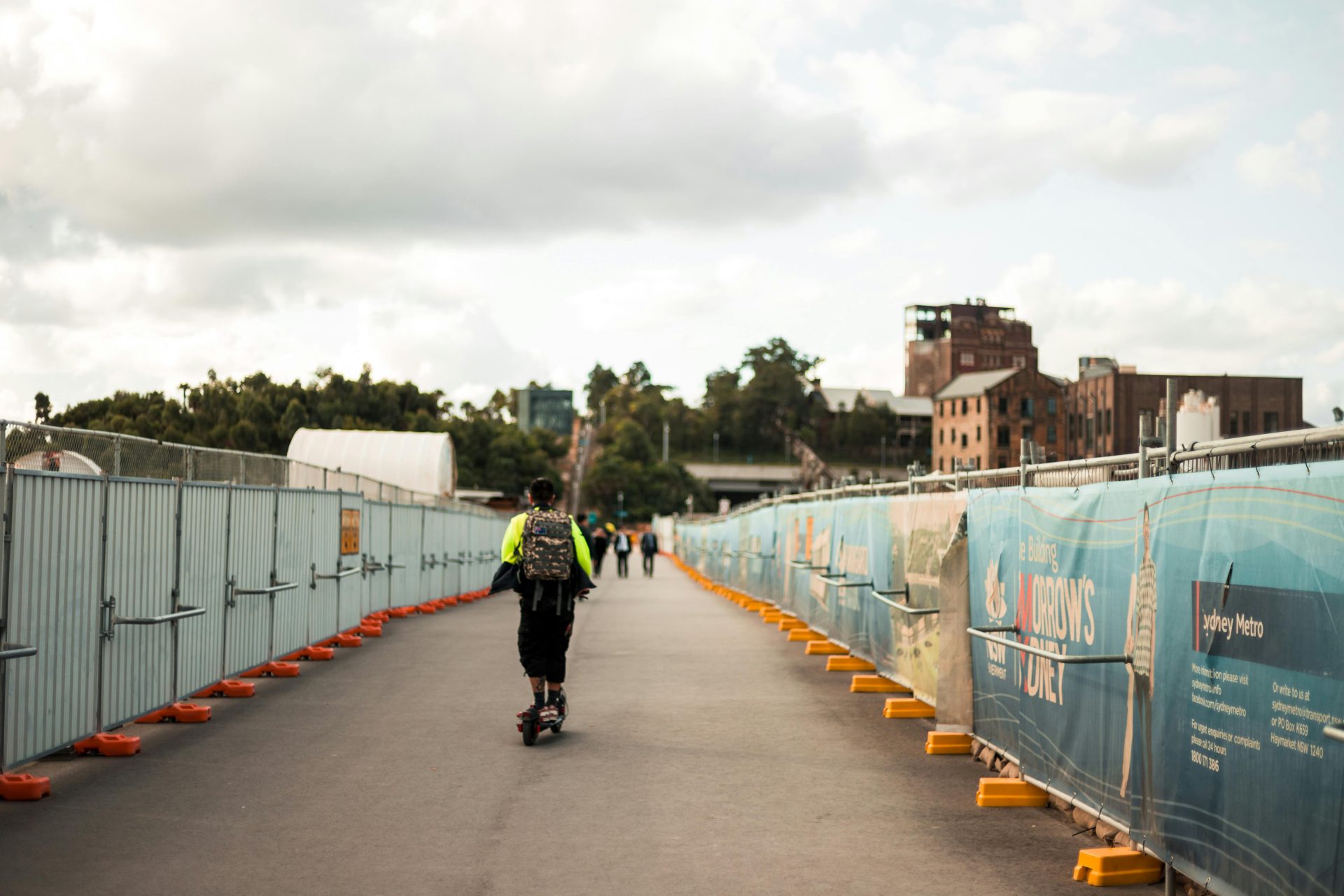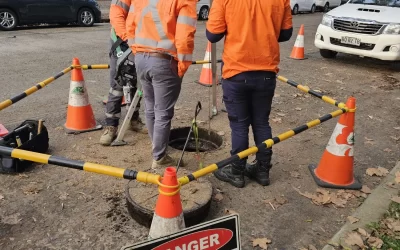The Role of Cadastral Surveyors
Cadastral surveyors play a crucial role in the development and management of land in urban areas. Their primary responsibility is to define and delineate land boundaries, ensuring that boundary lines are clear and legally recognised. This is particularly significant in a bustling metropolis like Sydney, where land is at a premium and the stakes are high.
A land surveyor plays a crucial role in ensuring the accuracy and legality of these boundary lines.
In the context of Sydney’s growth, cadastral surveyors are instrumental in facilitating urban development. They provide essential information that supports planning and zoning decisions, helping to shape the city’s landscape. By accurately mapping land parcels, they enable developers, architects, and city planners to make informed decisions about land use and development.
Historical Context
Understanding the historical context of cadastral surveying in Sydney is vital. The city’s transformation from agricultural land to a thriving urban centre has been profound. Initially, much of the land was used for farming, with vast tracts dedicated to agriculture. As the population grew and the demand for housing increased, the need for precise land measurements became apparent.
In the early days of Sydney’s settlement, land was allocated based on informal agreements and rudimentary surveys. However, as the city expanded, a more systematic approach was required. This led to the establishment of formal cadastral surveys, which provided a framework for land ownership and development. Frameworks like the Public Land Survey System (PLSS) guided the establishment of these formal cadastral surveys, providing a systematic approach to land allocation and ownership. The introduction of the Torrens title system in the 19th century marked a significant turning point, as it simplified the process of land registration and ownership, making it easier for individuals to buy and sell property. This system not only enhanced security of tenure but also encouraged investment in land, which was crucial for the burgeoning urban landscape.
Modern Techniques in Cadastral Surveying
Today, cadastral surveyors employ advanced technologies to carry out their work. Techniques such as GPS (Global Positioning System) and GIS (Geographic Information Systems) have revolutionised the field. These tools allow for precise measurements and detailed cadastral maps, which are essential for urban planning and development. Elevation data is crucial for assessing land steepness and is often integrated into cadastral maps for detailed land analysis.
Additionally, aerial surveying and drone technology have emerged as valuable assets in cadastral surveying. Drones can capture high-resolution images of land, providing surveyors with a comprehensive view of the area. This not only enhances accuracy but also significantly reduces the time required for surveys. Furthermore, the integration of 3D modelling software has enabled surveyors to visualise complex land parcels and their potential uses more effectively. This technological advancement aids in conflict resolution between landowners and developers, ensuring that all parties have a clear understanding of property boundaries and potential developments, thus fostering a more harmonious urban environment.
Impact on Urban Development and Property Boundaries
The influence of cadastral surveyors on urban development in Sydney cannot be overstated. Their work ensures that land is used efficiently and sustainably, promoting balanced growth across the city. Cadastral surveyors contribute to effective land management by providing accurate data that supports sustainable urban development. This is particularly important in a city where space is limited and the demand for housing continues to rise.
By providing accurate land measurements, cadastral surveyors help to prevent disputes over property boundaries, which can lead to costly legal battles. Their expertise is also essential in the planning stages of new developments, ensuring that projects comply with local regulations and zoning laws.
Facilitating Infrastructure Development
Cadastral surveyors are pivotal in the planning and execution of infrastructure projects. Whether it’s a new road, public transport system, or utility services, their input is essential. They assess land suitability, identify potential issues, and provide the necessary data to facilitate smooth project execution. Surveyors consider natural or artificial features when planning infrastructure projects to ensure that developments are practical and beneficial to the community.
For example, when planning a new public transport route, surveyors will analyse the land to determine the best path for the infrastructure. This involves considering existing land uses, environmental impacts, and community needs. Their insights help ensure that infrastructure developments are both practical and beneficial to the community.
In addition to traditional infrastructure, cadastral surveyors are increasingly involved in the integration of smart technologies into urban planning. As cities like Sydney embrace the Internet of Things (IoT), surveyors play a crucial role in mapping out the spatial requirements for smart grids, sensor networks, and other technological advancements. This forward-thinking approach not only enhances the efficiency of urban services but also improves the overall quality of life for residents by fostering a more connected and responsive urban environment.
Supporting Sustainable Development and Land Management
In recent years, there has been a growing emphasis on sustainable development in urban planning. Cadastral surveyors contribute to this movement by providing data that supports environmentally friendly practices. Spatial measurement principles are essential in ensuring that cadastral data supports environmentally friendly practices and sustainable urban development. They help identify areas suitable for green spaces, which are vital for enhancing the quality of life in urban environments.
Moreover, by accurately mapping land use, surveyors can assist in the preservation of natural habitats and the implementation of conservation measures. This is particularly relevant in Sydney, where the natural environment is an integral part of the city’s identity.
Furthermore, cadastral surveyors are instrumental in the assessment of climate change impacts on urban areas. By analysing land elevations and flood risks, they provide critical information that aids in the development of resilient infrastructure capable of withstanding extreme weather events. Their work not only safeguards property but also contributes to the broader goal of creating a sustainable urban landscape that can adapt to future environmental challenges. This proactive approach is essential in a coastal city like Sydney, where rising sea levels pose significant threats to both urban and natural ecosystems.
Cadastral Surveyors and Community Engagement
Engaging with the community is another significant aspect of a cadastral surveyor’s role. As urban development projects often affect local residents, it is essential for surveyors to communicate effectively with the community. This engagement helps to build trust and ensures that the needs and concerns of residents are taken into account. Cadastral surveyors often work with land administration offices to ensure that survey data is accurately recorded and maintained for public use.
Public consultations and information sessions are common practices where surveyors present their findings and plans to the community. This transparency allows residents to voice their opinions, ask questions, and gain a better understanding of the development process.
Building Trust Through Transparency
Trust is a fundamental component of successful urban development. Cadastral surveyors foster this trust by being transparent about their work and methodologies. By sharing information about land boundaries, zoning regulations, and development plans, they help demystify the surveying process. Cadastral documentation is crucial for maintaining clear and accurate records of property boundaries, which helps build trust with the community.
This transparency is particularly important in a diverse city like Sydney, where different communities may have varying perspectives on land use and development. By actively engaging with residents and addressing their concerns, surveyors can facilitate a more inclusive approach to urban planning.
Empowering Local Communities
Cadastral surveyors also empower local communities by providing them with the knowledge and tools needed to navigate the complexities of land use and development. Land information agencies play a crucial role in providing the data and tools needed for communities to understand and navigate land use and development. Workshops and educational programmes can help residents understand their rights and responsibilities regarding land ownership.
By equipping communities with this knowledge, surveyors enable them to participate more actively in the planning process. This empowerment can lead to more equitable outcomes, as residents feel more confident in advocating for their needs and preferences.
The Future of Cadastral Surveying in Sydney
As Sydney continues to grow and evolve, the role of cadastral surveyors will become increasingly important. The ongoing challenges of urbanisation, population growth, and environmental sustainability will require innovative solutions and expert guidance.
BLM’s Cadastral Survey Program maintains over two centuries of cadastral survey data, which is essential for land ownership and resource management.
Emerging technologies, such as artificial intelligence and machine learning, are likely to play a significant role in the future of cadastral surveying. These advancements can enhance the accuracy of surveys and streamline the data analysis process, allowing surveyors to focus on more complex tasks.
Adapting to Changing Needs
The needs of urban environments are constantly changing, and cadastral surveyors must adapt accordingly. This may involve developing new methodologies to address unique challenges, such as the integration of smart city technologies or the management of urban green spaces. Physical delineation is crucial in accurately marking property boundaries, which is essential for adapting to the changing needs of urban environments.
Furthermore, as climate change continues to pose significant threats to urban areas, surveyors will need to consider resilience in their planning. This includes assessing the vulnerability of land to flooding, heatwaves, and other environmental factors, ensuring that developments are sustainable and future-proof.
Collaboration with Other Disciplines and Cadastral Maps
The future of cadastral surveying will likely involve increased collaboration with other disciplines. Urban planners, environmental scientists, and community organisations will all play a role in shaping the future of Sydney’s growth.
Land surveying provides the foundational data needed for urban planners and other professionals to make informed decisions about land use and development.
By working together, these professionals can create a more holistic approach to urban development. Cadastral surveyors will provide the foundational data needed to inform decisions, while other experts can offer insights into environmental impacts, social equity, and community needs.
Conclusion
Cadastral surveyors are vital to the growth and development of Sydney. Their expertise in land measurement and boundary delineation supports urban planning and infrastructure development, ensuring that the city can accommodate its growing population sustainably. Through community engagement and the use of modern technologies, a cadastral surveyor can shape a future that balances development with environmental stewardship.
As Sydney continues to evolve, the role of cadastral surveyors will remain essential. Their ability to adapt to changing needs and collaborate with other disciplines will be crucial in creating a vibrant, sustainable urban environment that meets the needs of all its residents.




